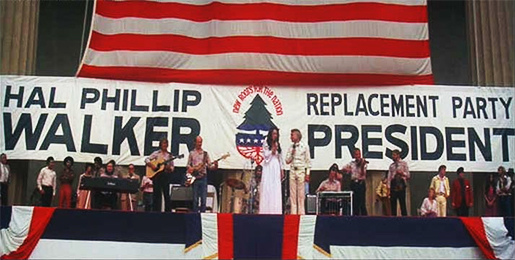Unique Trailers: TAXIDERMIA (2006)
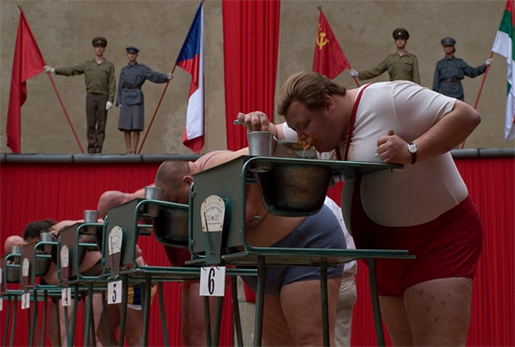
Two years ago, Hungarian filmmaker György Pálfi made a darkly comic familial splatter film based on the short stories of absurdist writer Lajos Parti Nagy. A vomtorium that dissects the inner workings, obsessions, and gluttonous fetishes of the Kálmán’s past three generations. A timeline laced and dripped into the warm, spent human ooze from Dante’s Circles of Hell. This film Taxidermia (2006) sounds like John “Se7en” Doe’s cup of tea.
The three generations syndrome by German novelist Thomas Mann follows the scheme that the grandfather starts the family on its course, then his son, the father, raises the family to the pinnacle of success so that the last generation’s son would waste it and start anew.
Dutch, once upon a time English, filmmaker Peter Greenaway applied this three generation scheme to filmmaking and concluded that the bold grandfather of the cinema was Sergei Eisenstein, the revolutionary Russian Soviet director who fashioned the immutable and much imitated Battleship Potemkin (1925)*. The renegade father of the cinema was Orson Welles who perfected the medium with the towering Citizen Kane (1939). Then the mutinousson of the cinema being Jean-Luc Godard broke and rearranged cinematic conventions by way of the French New Wave Breathless (1960).
TAXIDERMIA (2006) Trailer
Fair Warning: This One Gets Pretty Freaky
I really dig that smash cut with the crying rooster.
TAXIDERMIA (2006) International Trailer
A round of applause for the sickly fascinating website with the droning music and the decadently gruesome images. When you get to the spinning pin wheel, click on the same image twice to navigate to a new link in the site. Montreal-based Brazilian musician/DJ Amon Tobin scores the film and it sounds subterranean.
Taxidermia was Hungary’s official entry for the Academy Awards’ Best Foreign Film. I wonder how long before its judges walked out of the screening room to get a bucket. Roger Ebert, after watching it at the Cannes Film Festival wrote, “I am sure Taxidermia is an important film and certainly a brave one, but I doubt if I know anyone who would thank me for recommending it”. European art critic Boyd van Hoeij called it the best film of 2006.

I have not seen this film just yet, not for a lack of stomach mind you. I’d have gladly bought a DVD released by Tartan outside of North America had I not found out about the Hungarian produced two-disc special edition. It is packaged like a slab of meat wrapped in cellophane — “Cause you can look right through me. Walk right by me” (couldn’t help myself!) — sold in supermarket.
Disc One features the film in an anamorphic widescreen transfer with Dolby 2.0, Dolby 5.1 and DTS 5.1 soundtracks. Optional English subtitles are included. Supposedly there is a DVD version that includes a director’s commentary but is not included here.
Disc Two has a 42 minute production, 30 minutes of deleted scenes, with optional director’s commentary, 8-minute visual design and concept gallery, 3 minute stills gallery, Hungarian and International trailers, two music videos by the band Hollywoodoo, Taltosember vs Ikarus — a 20 minute short film by György Pálfi, storyboards, and an interactive game.
Unfortunately, the Hungarian retailers are keeping this DVD edition a secret from the rest of the world. Anyone who knows how I can get a copy of this special edition would be greatly appreciated.
*I originally wrote “…the bold grandfather of the cinema was D.W. Griffithswho made the first narrative-sophisticated feature film Birth of a Nation (1915) – a pity it is irredeemably racist.” Whether Eisenstein or Griffiths is the real grandfather of cinema has the makings of a blood-on-the-walls debate between cinites.














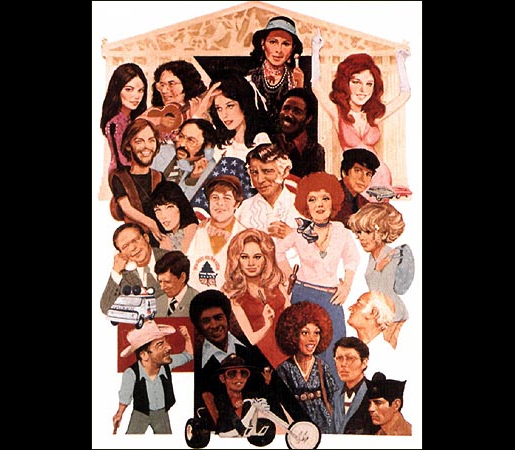
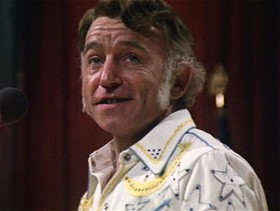 Watching Nashville, bursting with irony and exuberance, in its 35mm glory was a great experience as much as doing the same with Hitchcock’s Rear Window (1954) and Kubrick’s 2001: A Space Odyssey (1968). I got chills again watching the main title sequence that features a panoramic J. William Myers Jr. painting of all the characters (featured above). Even while listening to the slow, shivery rendition of the schmaltzy folk song “We Must Be Doing Something Right To Last 200 Years” sung by a leery Henry Gibson (Magnolia, 1999). I’ve been punch-drunk in love with the film having seen it a half-dozen times. If I had attempted to single out every performer and storyline here, I’d be at the IMDB all night.
Watching Nashville, bursting with irony and exuberance, in its 35mm glory was a great experience as much as doing the same with Hitchcock’s Rear Window (1954) and Kubrick’s 2001: A Space Odyssey (1968). I got chills again watching the main title sequence that features a panoramic J. William Myers Jr. painting of all the characters (featured above). Even while listening to the slow, shivery rendition of the schmaltzy folk song “We Must Be Doing Something Right To Last 200 Years” sung by a leery Henry Gibson (Magnolia, 1999). I’ve been punch-drunk in love with the film having seen it a half-dozen times. If I had attempted to single out every performer and storyline here, I’d be at the IMDB all night.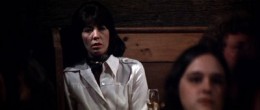 The scene is set in a tavern one night where Tom Frank, a handsome and monstrously hedonistic country singer, played by Keith Carradine (HBO’s Dexter, 2007), very gently sings, “I’m Easy” (the only won Academy Award out of five including Best Picture). Lily Tomblin (Flirting with Disaster, 1996) plays Linnea, a dissatisfied housewife and loving mother who sits in the shadows way back looking transfixed as though Tom were a siren. She thinks he’s singing to her (he is!). So does every woman in the audience who has already slept with him including Shelley Duvall, Cristina Raines, and the beautiful Geraldine Chaplin (“I’m Opal! I’m from the BBC!”). It’s such a bewitchingly vulnerable moment coated in hot tar.
The scene is set in a tavern one night where Tom Frank, a handsome and monstrously hedonistic country singer, played by Keith Carradine (HBO’s Dexter, 2007), very gently sings, “I’m Easy” (the only won Academy Award out of five including Best Picture). Lily Tomblin (Flirting with Disaster, 1996) plays Linnea, a dissatisfied housewife and loving mother who sits in the shadows way back looking transfixed as though Tom were a siren. She thinks he’s singing to her (he is!). So does every woman in the audience who has already slept with him including Shelley Duvall, Cristina Raines, and the beautiful Geraldine Chaplin (“I’m Opal! I’m from the BBC!”). It’s such a bewitchingly vulnerable moment coated in hot tar.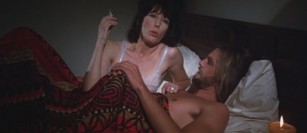 The third scene takes place in Tom’s motel room where he’s in bed with Linnea. Having had sex, she teaches him some sign language (her adorable children are deaf) and he is so engaged with her, surprising considering how he callously treats other women who fawn over him. Linnea figures its time to go (unheard by Linnea, another song “For the Sake of the Children, We Must Say Goodbye” from before could have played over it — thankfully it didn’t). Heartbroken by her leaving, Tom cruelly calls up another girlfriend by phone while Linnea gets dressed. Linnea is not affected and she kisses Tom goodbye. Having failed to hurt her, Tom hangs up the phone. Pauline Kael noted in her review that “he’ll remember her forever.”
The third scene takes place in Tom’s motel room where he’s in bed with Linnea. Having had sex, she teaches him some sign language (her adorable children are deaf) and he is so engaged with her, surprising considering how he callously treats other women who fawn over him. Linnea figures its time to go (unheard by Linnea, another song “For the Sake of the Children, We Must Say Goodbye” from before could have played over it — thankfully it didn’t). Heartbroken by her leaving, Tom cruelly calls up another girlfriend by phone while Linnea gets dressed. Linnea is not affected and she kisses Tom goodbye. Having failed to hurt her, Tom hangs up the phone. Pauline Kael noted in her review that “he’ll remember her forever.”